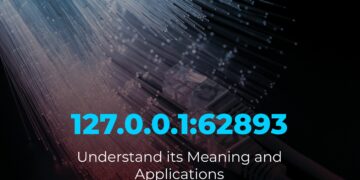SSIS 950 is a powerful tool used for data integration and transformation, enabling businesses to manage and move data efficiently. This guide will provide a comprehensive overview of SSIS 950, explaining its purpose, functionality, and how to get started. Even if you’re new to data tools, this article is crafted to make SSIS 950 easy to understand.
What Is SSIS 950 and Why Is It Important?
SSIS 950 stands for SQL Server Integration Services version 950, a Microsoft tool designed for data integration, transformation, and migration. It’s an essential part of the Microsoft SQL Server suite, allowing organizations to consolidate data from various sources into a single, unified view. This tool is important because it provides businesses with the capability to process and organize large volumes of data, ensuring that accurate, timely, and actionable insights are available.
Whether it’s used for simple data migration or complex data warehousing, SSIS 950 helps businesses streamline their data workflows, which can improve decision-making, operational efficiency, and overall performance. For organizations looking to leverage their data effectively, understanding SSIS 950 is a critical first step.
How Does SSIS 950 Work?
SSIS 950 operates by creating and managing data workflows. Essentially, it extracts data from various sources, transforms it as necessary, and then loads it into a destination system, a process often referred to as ETL (Extract, Transform, Load). These ETL processes are configured in packages, which serve as containers for the steps and components that handle the data.
The tool supports a variety of data sources, including databases, flat files, and even cloud storage solutions. Through its intuitive graphical interface, users can drag and drop tasks to design workflows. These workflows can handle tasks like data cleansing, aggregation, and even perform complex calculations, making SSIS 950 versatile enough for both basic and advanced data operations.
Who Uses SSIS 950?
SSIS 950 is widely used by data professionals, including database administrators, data engineers, and business analysts, who need to manage and process data. It is also utilized by organizations across various sectors such as finance, healthcare, retail, and technology, which rely on data-driven decision-making. SSIS 950 is particularly useful for businesses that have significant data integration requirements, as it allows them to manage data from disparate sources, ensuring the data is clean, accurate, and ready for analysis.

What Data Can SSIS 950 Move?
SSIS 950 can move a wide range of data types. Whether the data is structured, semi-structured, or unstructured, SSIS 950 has tools and components that facilitate the movement of:
- Database records from SQL, Oracle, and other relational databases.
- Flat files such as CSV, XML, and JSON.
- Data from cloud sources like Azure, AWS, and Google Cloud.
- API data through connectors for RESTful and SOAP-based services.
With SSIS 950, users can manage data migration projects involving everything from small datasets to large-scale data warehouses.
SSIS 950 for Beginners – First Steps
Getting started with SSIS 950 might seem intimidating, but with the right approach, it can be manageable. The first step involves setting up your development environment, which requires installing Microsoft SQL Server Data Tools (SSDT). Once you have SSDT, you can start creating SSIS projects by opening a new Integration Services project in SQL Server Data Tools.
From there, beginners can explore the design interface, where tasks and components are dragged into the workspace to create ETL workflows. Understanding the basics of each task, such as data flow, control flow, and various transformation components, will set you on the right path.
What Makes SSIS 950 Different from Other Tools?
SSIS 950 stands out because it integrates seamlessly with Microsoft SQL Server and is highly optimized for performance on Windows environments. Unlike some other ETL tools, SSIS 950 provides a graphical interface that makes complex data tasks more accessible. Its robust error handling and logging capabilities also ensure that data workflows are reliable and efficient. Additionally, SSIS 950 has built-in connectors for a variety of data sources, eliminating the need for custom coding for many common data integration tasks.
How to Get Started with SSIS 950
To get started with SSIS 950, you’ll need to follow these steps:
- Install SQL Server and SSDT: These are required to develop and deploy SSIS packages.
- Open SQL Server Data Tools (SSDT): Create a new project by selecting “Integration Services Project.”
- Design Your First Package: Use the drag-and-drop interface to set up tasks and data flows.
- Configure Data Sources: Connect to your data sources and specify the data destinations.
- Test and Debug: Run your package in debug mode to check for errors and make necessary adjustments.
Once you’re familiar with the interface, you can start experimenting with different tasks and transformations to get a deeper understanding of how SSIS 950 works.
SSIS 950 – Tips for Beginners
Here are some essential tips to help beginners succeed with SSIS 950:
- Start Small: Begin with a simple project to understand the basics. You can gradually build more complex packages as you gain confidence.
- Use Built-In Components: Take advantage of the pre-configured tasks and transformations provided by SSIS 950.
- Practice Error Handling: Learn how to configure error handling and logging to ensure your packages are robust and reliable.
- Leverage Community Resources: Forums, tutorials, and online courses can provide valuable insights and practical tips.
Common Questions About SSIS 950

Is SSIS 950 Hard to Learn?
Learning SSIS 950 can be challenging initially, especially for those new to data integration. However, with practice and access to the right resources, most people can become proficient in a relatively short amount of time. The graphical interface simplifies many tasks, and once you understand the basics of ETL, you’ll find that SSIS 950 is quite intuitive.
Best Resources to Learn SSIS 950
Some great resources for learning SSIS 950 include:
- Microsoft’s Official Documentation: Detailed and comprehensive, suitable for reference.
- Online Courses: Platforms like Udemy, Coursera, and LinkedIn Learning offer beginner to advanced courses.
- Community Forums: Websites like Stack Overflow and SQLServerCentral provide support and solutions from experienced users.
- YouTube Tutorials: Free video tutorials can be a great way to get a visual and practical introduction.
How Does SSIS 950 Help in Real Life?
SSIS 950 is invaluable in real-world applications where data must be efficiently integrated and transformed. For instance, businesses use SSIS 950 to automate data flows, consolidate data from multiple departments, and ensure data accuracy across different systems. This capability is essential for generating reports, conducting analyses, and supporting business intelligence initiatives, which directly impact business strategies and outcomes.
Benefits of Using SSIS 950
SSIS 950 offers a range of benefits that make it a preferred choice for data professionals:
- Efficiency: Automates data workflows, saving time and reducing the risk of manual errors.
- Scalability: Handles large volumes of data, making it suitable for both small and large organizations.
- Flexibility: Supports a variety of data sources and types, enabling versatile data integration.
- Cost-Effective: As part of SQL Server, it provides robust ETL capabilities without requiring additional investments in separate tools.
The Bottom Line
SSIS 950 is a powerful data integration tool that is accessible for beginners and robust enough for advanced users. Its role in simplifying data movement and transformation makes it invaluable for businesses looking to maximize the potential of their data. By understanding the basics and leveraging community resources, you can quickly get up to speed with SSIS 950, paving the way for more effective and efficient data management practices.
With a bit of practice, anyone can learn how to use SSIS 950 to streamline data tasks and support business objectives, making it a valuable skill for any data professional.








